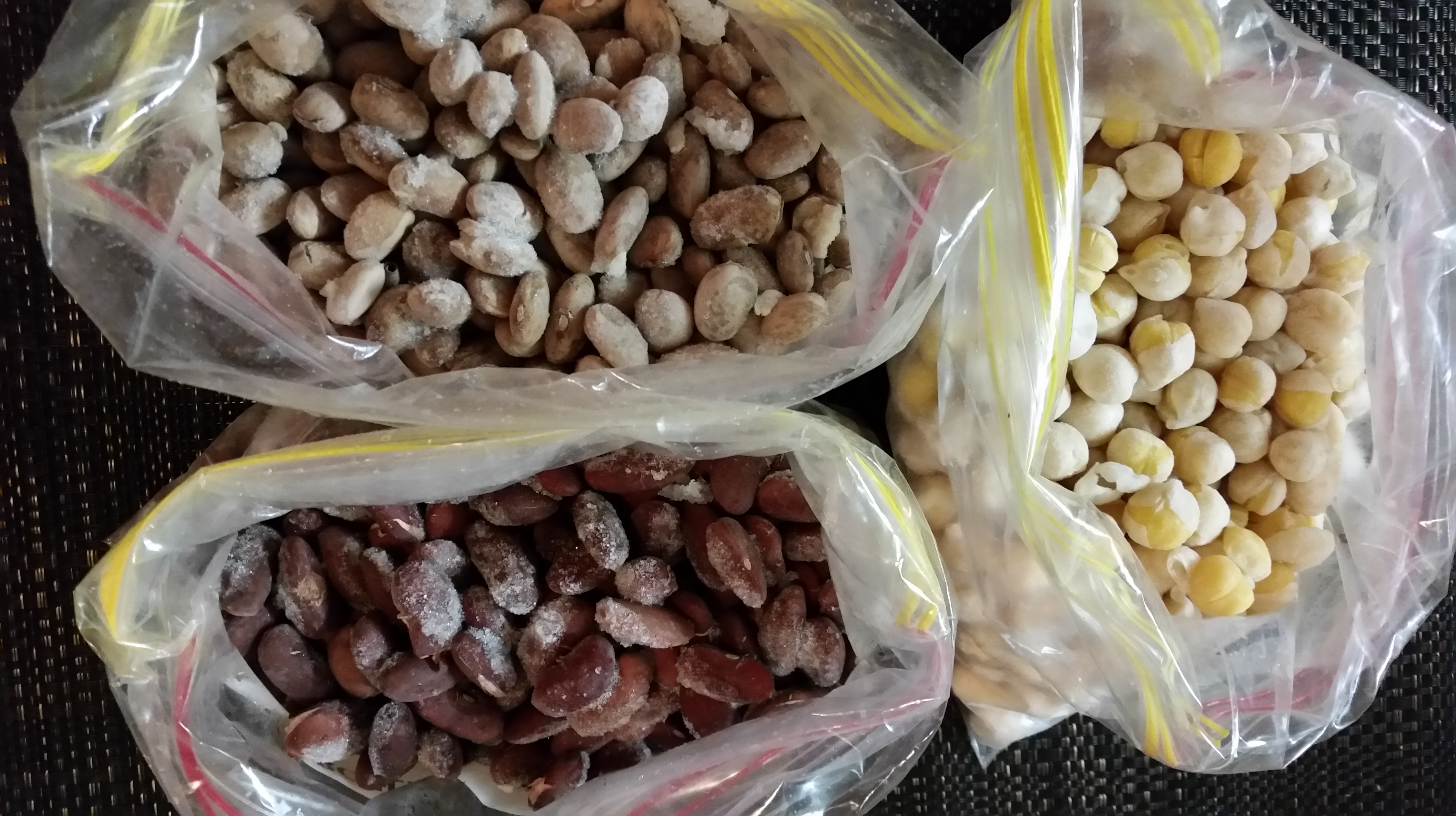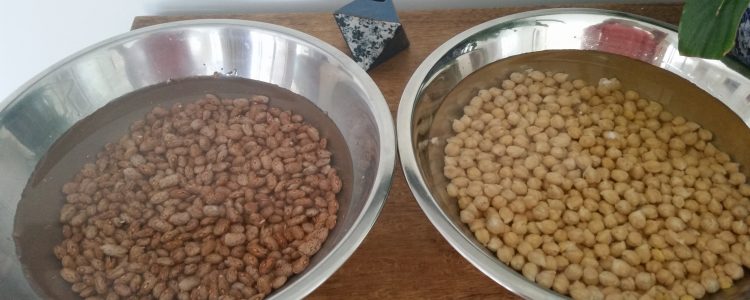Legumes are making a comeback. Yes, indeed.
While they’ve had some bad press over the years, the health benefits are many. Knowing how to cook them helps, and remember, when adding extra fibre to your diet, do so gradually and you’ll avoid unpleasant side effects.
Cooking them in advance in batches saves you money and time, and you won’t need to resort to tinned legumes which can be wasteful if you don’t use the whole tin.
We always have a variety of cooked legumes in the freezer ready to add handfuls to different dishes (slow cooked meals, curries, breakfast dishes, casseroles, soups, taco mixes) or to thaw out for homemade hummus or dips.
Legumes are one of nature’s true superfoods packed full of essential nutrients – protein, fibre and vitamins/minerals.

Here’s what you need:
- 500g dried beans is a good amount for a batch – buy organic if you can to lessen your toxic load
Legumes (beans) that need to be soaked overnight
- Adzuki beans, black beans, borlotti beans, broad beans (fava), butter beans (lima), cannelloni beans, chickpeas, kidney beans, navy beans (haricot), pinto beans, soy beans
Legumes not necessary to soak
- Lentils, split peas
Here’s what you do:
Place the beans in a large bowl, cover with water and soak overnight or for quite a few hours at the very least. Change the water a couple of times if you can. They will expand by about 50% in size.
The next morning rinse the beans under a running tap. This all helps to remove the phytic acids and enzymes that can be the culprit for increased digestive activity (you know, the negative kind like bloating and gas).
Put the soaked beans in a large saucepan and boil gently for 1 – 1.5 hours, depending on the beans and the age they are (the older they are, the longer they will take to cook).
When they are cooked, they should look plump and tender and should remain in tact, although the skins can split, especially with chickpeas. You don’t want them to turn to mush so don’t overdo it. Remember – they will have further cooking time if you intend to add them to another dish.
Drain and cool them in a colander.
When cool, spread in single layer on trays that will fit in your freezer. This will avoid them clumping together.

When frozen, place in labelled zip lock bags.
You’re done!
Recipes Using Legumes
With your health in mind,
Caterie


One comment
[…] Find out how to batch cook your legumes here. […]